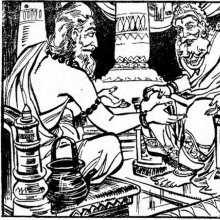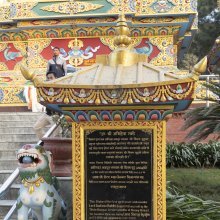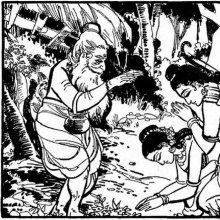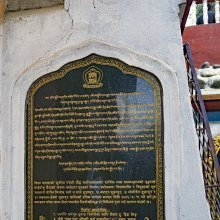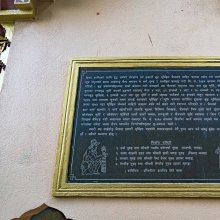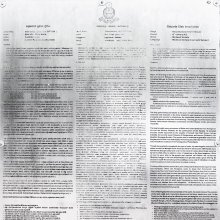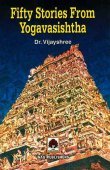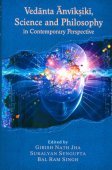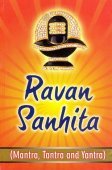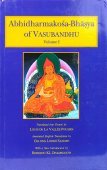Peace: 1 definition
Introduction:
Peace means something in Hinduism, Sanskrit. If you want to know the exact meaning, history, etymology or English translation of this term then check out the descriptions on this page. Add your comment or reference to a book if you want to contribute to this summary article.
Images (photo gallery)
(+1 more images available)
In Hinduism
Shilpashastra (iconography)
Source: Shodhganga: Elements of Art and Architecture in the Trtiyakhanda of the Visnudharmottarapurana (shilpa)Peace is associated withe the Sentiment of Quietism (śānta), which refers to one of the Nine Sentiments (citrarasa) in ancient Indian Painting (citra), according to the Viṣṇudharmottarapurāṇa, an ancient Sanskrit text which (being encyclopedic in nature) deals with a variety of cultural topics such as arts, architecture, music, grammar and astronomy.—Śāntarasa is seen to be included in the list of nine citrarasas. If a painter paints a picture of lord Śiva in his meditative situation as described in the 3rd canto of the Kumārasambhava, it would definitely reflect the sentiment of peace. [...] Thus, painting is a medium of showing the inner feelings and emotions of a painter which can strikes the inherent sentiments of connoisseur’s mind, for example: peace in the sentiment of quietism.

Shilpashastra (शिल्पशास्त्र, śilpaśāstra) represents the ancient Indian science (shastra) of creative arts (shilpa) such as sculpture, iconography and painting. Closely related to Vastushastra (architecture), they often share the same literature.
See also (Relevant definitions)
Starts with: Peaceful moon.
Full-text (+771): Shanti, Sandhi, Kapalasamdhi, Sandhivigraha, Ayuddha, Paribhushana, Santanasandhi, Aman, Mahashanti, Samasandhi, Sukhasamadhana, Samarthin, Upashanta, Taha, Salla, Samtanasamdhi, Samdhi, Ucchinna, Adrishtapurushasamdhi, Panabandha.
Relevant text
Search found 427 books and stories containing Peace; (plurals include: Peaces). You can also click to the full overview containing English textual excerpts. Below are direct links for the most relevant articles:
The Agni Purana (by N. Gangadharan)
Chapter 239 - The duties of a king (continued)
Chapter 87 - Mode of purification of the principle of peace (śānti-śodhana)
Chapter 234 - The six expedients used by the king (ṣāḍguṇya)
Shanti Mantra (by Various authors)
The Foundations of Peace < [July 1948]
At Peace with Oneself < [January – March, 1978]
Nuclear Weapons < [January – March, 1987]
Kautilya Arthashastra (by R. Shamasastry)
Chapter 3 - The Character of Equal, Inferior and Superior Kings < [Book 7 - The End of the Six-fold Policy]
Chapter 6 - The March of Combined Powers < [Book 7 - The End of the Six-fold Policy]
Chapter 7 - Peace and War by Adopting the Double Policy < [Book 7 - The End of the Six-fold Policy]
Heimskringla (by Snorri Sturlson)
Part 73 - Agreement Between King Harald And King Svein < [Chapter IX - Saga Of Harald Hardrade]
Part 29 - Erling's Expedition To Denmark < [Chapter XVI - Magnus Erlingson's Saga]
Part 105 - King Magnus's Death < [Chapter IX - Saga Of Harald Hardrade]
Visuddhimagga (the pah of purification) (by Ñāṇamoli Bhikkhu)
Insight (4): Knowledge of Danger < [Chapter XXI - Purification by Knowledge and Vision of the Way]
(10) Recollection of Peace < [Chapter VIII - Other Recollections as Meditation Subjects]
Related products
(+3 more products available)
